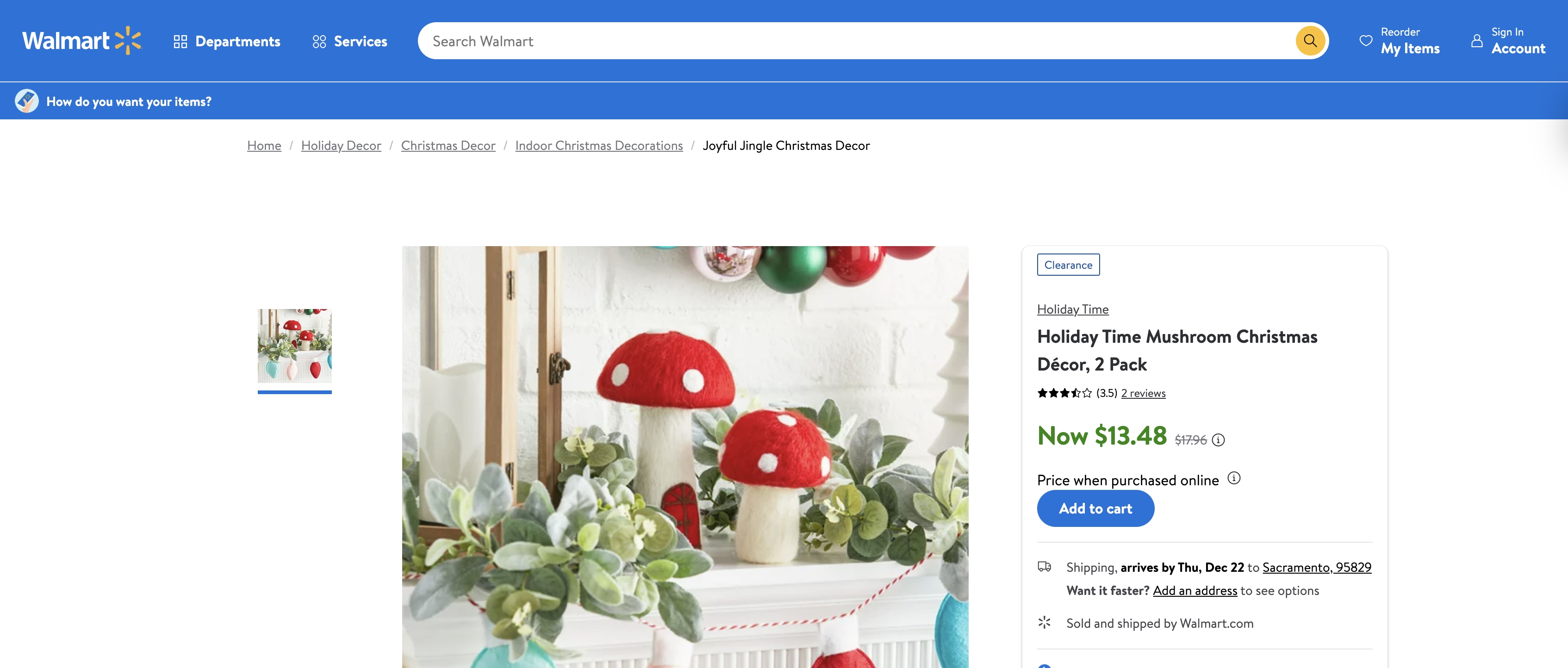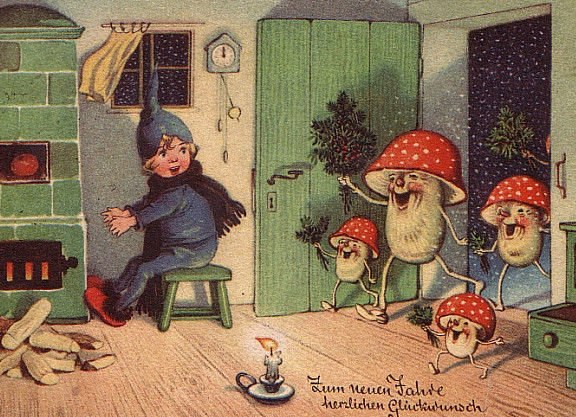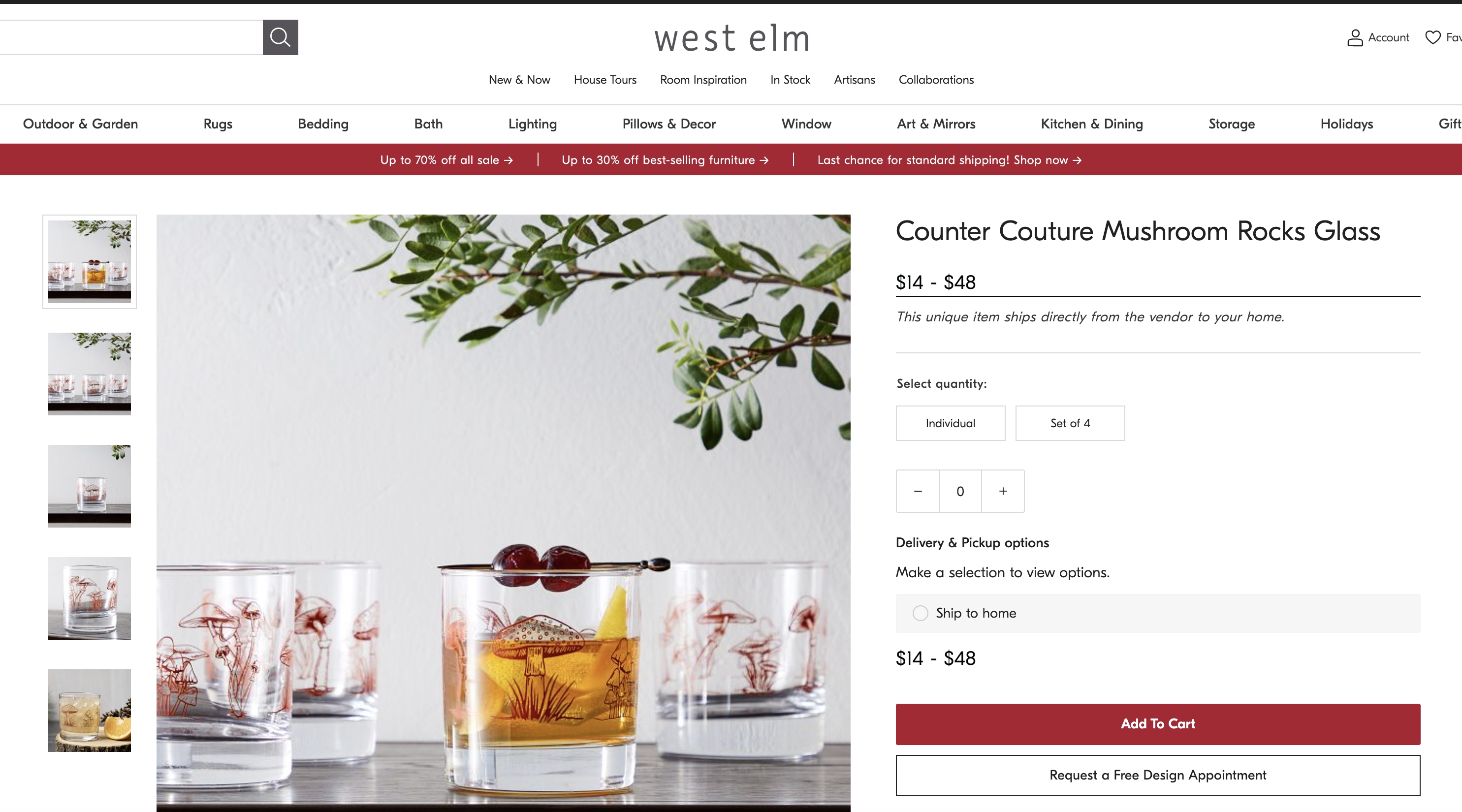
The marvel of mushrooms is that they seem to sprout anywhere and everywhere. They’re certainly popping up like crazy these days, especially the psychedelic variety. From new patents and research to underground holistic treatment to self-guided journeys to festival enjoyment, psilocybin — “magic mushrooms” or “shrooms” if you are someone’s 47-year-old uncle — are hot on their way to defining a generation of partyers, healers, and seekers.
And… if this Christmas is any indication, mind-altering mushrooms have apparently influenced loads of interior decorators, too. Because these fungi are freaking everywhere. Not just niche sites like Etsy either — we’re talking Walmart.

Look around this Christmas. There’s a huge swell of mushroom imagery. Notice all those shiny red mushroom decorations? They’re everywhere. But why? Well, there are a few reasons — ranging from “cool and historical” to “incredibly f*cking jaded.”
We will get to both below:
THE HISTORY

Here’s the gist of it:
Centuries ago, the shamans of the indigenous tribes of Siberia and Northern Europe kicked off the Winter Solstice festivities (around Dec 21) by consuming the Amanita Muscaria (fly agaric) mushroom. Often found growing below sacred pine trees, these are the iconic red and white spotted mushrooms that housed the Smurfs and powered up Super Mario. Though they don’t contain psilocin (which metabolizes into psilocybin in the body), these things still induce a heavy trip.
According to lore and historical sources, the shamans would journey across the tundra — envisioning themselves as animals flying toward the North Star. After the journey, they’d drop through the smoke hole of dome-shaped yurts and share what they learned with their communities.
It’s now widely believed that this might be the foundation of the Santa mythos. When you think about it, metaphorically flying through the winter sky and returning down the chimney with gifts of knowledge is an image not far from the modern Santa (minus the materialism, but we’ll get to that).
So why is today’s Santa so different? Myths and traditions can sometimes be a long game of telephone; absorbing, adding, and losing elements as they pass through time. Add Nordic and Germanic folklore, a 4th-century Turkish bishop called St. Nicholas, and a new marketable Santa drawing by Coca-Cola in 1931 and we’ve basically got modern Christmas without the fungi.
But while this game of historical telephone has altered the original shaman tradition, the red and white Amanita Mushroom was featured heavily in Christmas decor… until the REEFER MADNESS and drug panic of the fifties. The old Christmas postcard above is just one of the thousands where the mushrooms make cameos.
Now clearly, the energy around this sort of imagery and decor is ramped up this year. After decades of being mostly expunged, the whole mushroom-Christmas connection is back with a vengeance. This brings us to…
WHY NOW?

Well, because of shifting cultural mores, basically. Because of mass cultural acceptance. Because all the cool kids are doing it. Because when the cool kids do something, the brands notice. Brands like West Elm stay ready to react to cultural zeitgeists like this. Why?
Because. They. Like. Money.
“It’s become commonplace and is generally believed that the whole ‘Santa Claus’ myth is a folkloric tradition of shamanic travel,” Carl Ruck, professor of Classical Studies at Boston University told Yahoo recently, ” and that reindeer are notorious for liking to eat these mushrooms and become inebriated on them.”
When Ruck says “commonplace,” he’s illustrating that the cultural attitudes around psychedelics are shifting rapidly. Heck, today there was news about a new bill to decriminalize psilocybin in California. Newsweek is covering microdosing!
Times have changed and many concepts once deemed untouchable have now seemed to have entered a state of re-evaluation. Psilocybin use is a prime example, but so too is history itself. By diving a little deeper, the celebrations of events like Columbus Day, Thanksgiving, and The Fourth of July have all been recently questioned and investigated. Pair both phenomena with Christmas, and there’s no surprise to see mushrooms pop up all around the holidays for their historical and contemporary relevance.
When history meets the cultural zeitgeist meets capitalism — viola! There you have the recipe for a decor revolution!
0 Commentaires